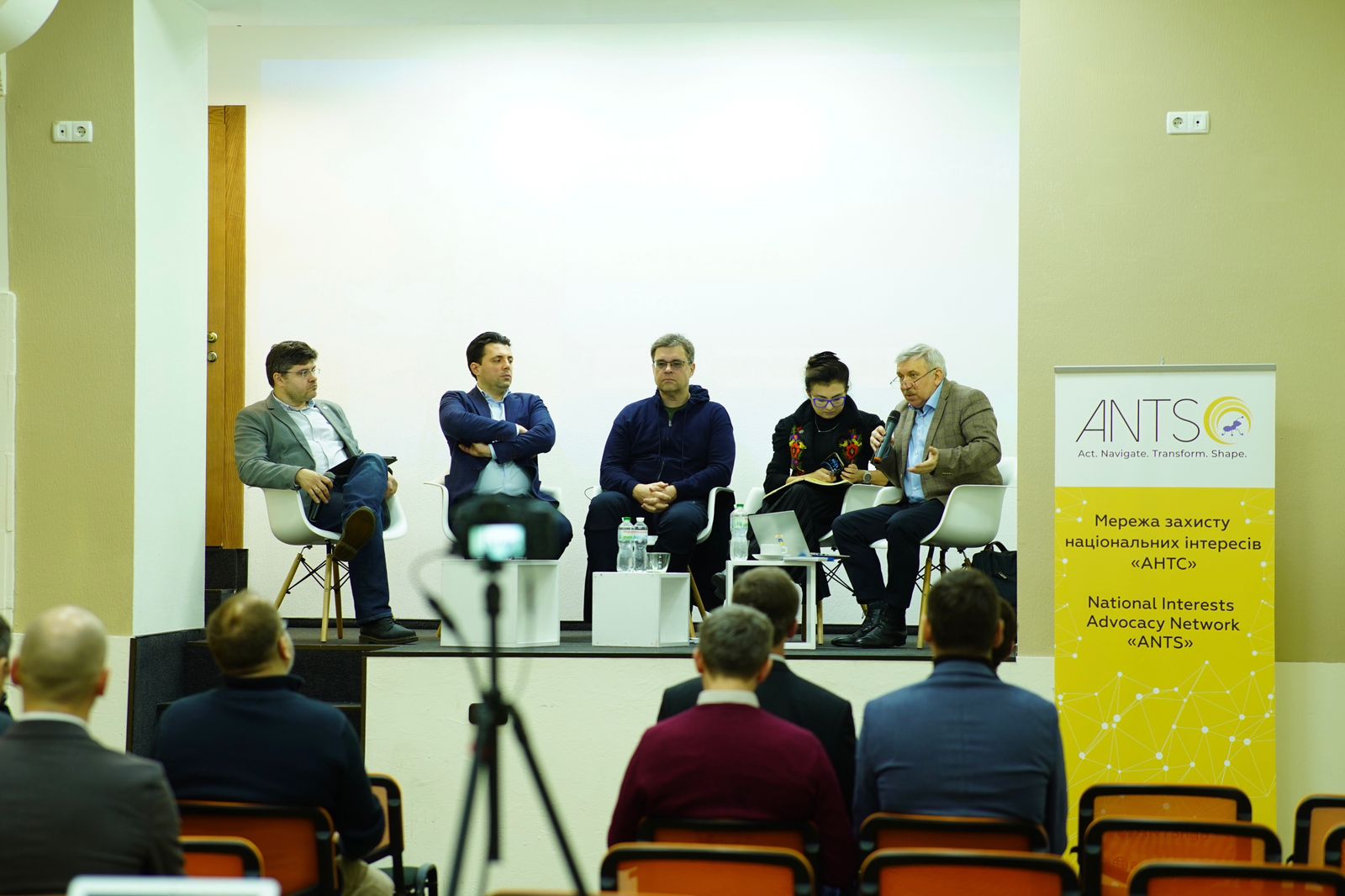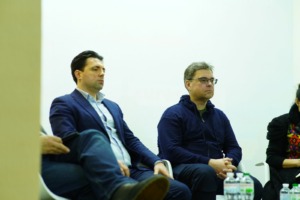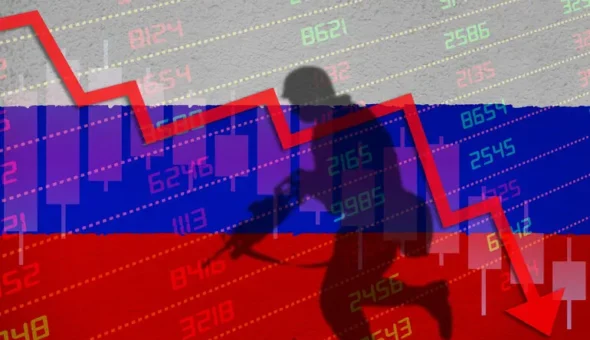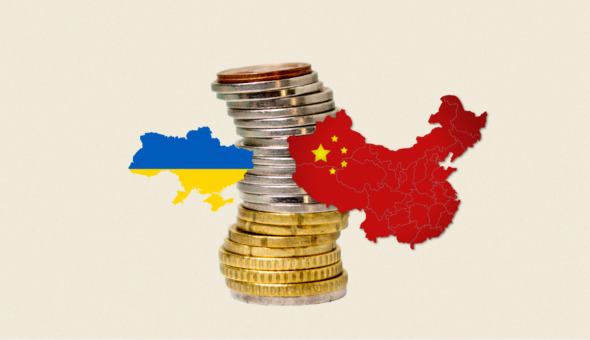
Representatives of state authorities, the public, and donors discussed the state of Ukraine’s energy system, challenges related to the restructuring of the energy industry, taking into account European integration obligations and military threats, as well as tools and sources of energy financing of the future.
“ANTS” experts will outline all the proposals that were made during the panel discussion in the form of appeals to government officials and international partners.
“We will use these proposals during advocacy, which we will carry out in key EU capitals in order to continue mobilizing the world around our victory. “ANTS” and ICUV will have May full of trips. There will be about 12 visits: to Israel, the USA, several international events, such as a security conference in Estonia, the Brussels Security Forum. We will raise these issues and continue the advocacy of weapons, the advocacy of fighter jets such as the F-16, the advocacy of air defense systems, the issue of the demilitarization of the Black Sea. We aim to openly talk about how to achieve victory for Ukraine, victory without compromises, without forcing Ukraine to negotiate at our expense and at the expense of the security of the European continent. We clearly understand the geopolitical significance of Ukraine’s victory and russia’s defeat. This is an issue of both energy and global food,” said Anna Hopko, head of ANTS.
Oleksandr Kharchenko, director of the Energy Research Center, believes that there are only three good news in preparation for the next heating season.
“Ukraine has more than enough gas and will have more than enough coal. There will be no problems with either. As for the restoration of generation. I have a lot of faith in Ukrhydroenergo, which will do everything it can, but it won’t help us much, because there won’t be much water in the fall. Therefore, it isn’t worth counting seriously on Ukrhydroenergo in the fall. The atom will work, if we are lucky it will be repaired during the summer, and a little brought to a working normal state, then it will work. This is good news, the third. But that’s if we’re lucky,” Kharchenko said.
According to him, everything else is bad.
“High-voltage networks. I don’t think that 20% of the ordered will arrive before the next heating season. I think less will come. The pace of production and the pace of delivery don’t allow us to count on significant deliveries of heavy equipment until the next heating season. During the season, there will be intensive traffic. And now it is necessary to think about warehouses for equipment, somewhere outside of Ukraine, in order to ensure flexible and correct logistics. This will be a separate task, because each transformer is 300+ 100 tons. The very platforms for their transportation aren’t physically enough in Europe now. As for coal generation. There is a problem on top of a problem, he explained.
Kharchenko doesn’t believe in building bunkers for substations. After all, the construction of the bunker will cost 110 million dollars, like three complete sets of equipment inside.
“Implementation of large-scale projects of this type is unlikely. What should be done in this situation? First, it is clear that air defense. Second, I am sure that the maximum possible light protection should be done at all energy facilities. Third, it is necessary to install decentralized generation in large cities, gas turbines, gas piston engines so that even during attacks, heating and water supply will work if the cities are cut off from external energy supply. This can happen. Therefore, there must be degeneration in large cities, especially in case of frost, so that it is possible to turn on the internal generation in the city, connect the heating, connect the water supply and thus enable the city to survive without a major man-made disaster,” summarized the director of the Energy Research Center.
Mykhailo Gonchar, president of the Center for Global Studies of the 21st Century, confirmed that the damage caused to the energy infrastructure was enormous: more than 15,000 rocket and UAV launches. More than a hundred rockets hit huge objects. Generating capacities in UES decreased by 61%.
“The situation really doesn’t look very optimistic, because it is a question of the number of missiles and drones that will one way or another reach their goal. Roughly speaking, even if 95% is knocked down, the remaining 5% may eventually lead to a certain accumulated effect of damage to the energy system, when it stops functioning as a unified energy system,” said Mykhailo Gonchar.
drones that will one way or another reach their goal. Roughly speaking, even if 95% is knocked down, the remaining 5% may eventually lead to a certain accumulated effect of damage to the energy system, when it stops functioning as a unified energy system,” said Mykhailo Gonchar.
The infrastructure of the gas sector also suffered significant damage.
“This suggests that the objects of the gas infrastructure are also in the aggressor’s field of attention. It’s just that as long as the transit of russian gas to Europe continues, they try not to strike at the gas transport infrastructure. The danger lies in the fact that in case of termination of transit, russia will begin to destroy the surface part of the infrastructure of underground storage facilities, and then a situation will arise when there is gas in the gas storage facility, but it is impossible to take it from there.”
russians understand that energy losses will lead to the downfall of our economy. They will act systematically, and therefore from this point of view, no matter what measures we take, they will continue to act. What can be done?
“I took a fragment of the article “5 scenarios for Ukrainian-russian relations” by Volodymyr Horbulin, former secretary of national security and defense of Ukraine, which was written back in 2015. Among other things, it is about what to do in the conditions of total war. And this is what happens after February 22 last year. Ukraine will have to resort to a number of measures. I will focus on a few: focus on the uncompromising destruction of the enemy, striking the enemy’s critical infrastructure facilities, active guerrilla and sabotage activities. What am I leading to? The principle of substation by substation, oil depot by oil depot should work. Until we start striking the enemy’s critical infrastructure, he will not stop… Here it is still important to convey to our Western, primarily American partners that it turns out like this: russia can destroy our critical infrastructure to the entire depth of the territory, and we are prohibited from striking the enemy’s territory, because you see it will lead to an escalation scenario. But what we are observing during these 14 months is the victory of the armed invasion, this is an escalation scenario on the part of russia.”
 As the Deputy Minister of Energy of Ukraine Safarov Farid Kamil emphasized, Ukraine now has 47–50% of destroyed energy infrastructure.
As the Deputy Minister of Energy of Ukraine Safarov Farid Kamil emphasized, Ukraine now has 47–50% of destroyed energy infrastructure.
“As you know, the energy infrastructure began to suffer from the first days of the war. Territories that were occupied, there the aggressor destroyed the entire energy infrastructure, to the maximum. We are currently working on this issue in order to define these actions as actions against humanity and, in fact, genocide of the Ukrainian people. Today, we have approximately 47–50% of the destroyed infrastructure from the electricity transmission system operator. This is every TPP and CHP facility in Ukraine that was attacked by rockets or Shahed drones. This is a huge number of units that are out of order. This is the occupied Zaporizhzhia nuclear power plant, where in fact the aggressor’s actions can also be qualified as nuclear terrorism.”
More than 30 countries are helping Ukraine in the fight against the energy crisis. 7,000 tons of various equipment have already arrived.
“From the very beginning of the war, we prescribed regulations that allowed us to settle all these issues and, in fact, we have created a hub to which equipment arrives, which is distributed according to the principle agreed with our state partners, between energy infrastructure operators.
We are currently talking about 7,000 tons of various equipment that has arrived in Ukraine. More than 30 countries provide such assistance. About 10 million euros were spent on equipment by our partners in order to ensure sustainable work and functioning of the energy infrastructure. And what is most important – other companies have already joined private stakeholders who provide assistance to Ukraine. This war rallied the whole world to the defense of Ukraine and the Ukrainian people.”
Thorsten Vollert, adviser on energy issues of the EU Delegation to Ukraine, is convinced that Ukraine should not just rebuild what was destroyed by the war, but rebuild the economy and energy sector by renewing them.
“We’re talking about different dimensions, I mean critical infrastructure protection, where there’s a lot of, say, military stuff that’s not public, right up to the level of the BBC. For example, you mentioned that people (that is, Ukrainians themselves repairing and restoring) take their own energy security into their own hands, and I think that this is a great strength of Ukraine, that you have such a level. And I think that’s a good example. The energy sector is a good example for the entire Ukrainian economy, because Ukraine must rebuild itself after this war. The economy and the energy sector must be recovered. And that’s why I love “recovery”. So you have something new. It’s not just “restoring” as in English. It’s not like, if you have something in stock and you take it and put it in there. This is something new. And the whole system must be updated. That is why it is a challenge for us. Because so far we are focused on that,” he said.
By next winter, depending on military operations, you need to be ready.
“We need to be prepared for the fact that the central normal power system may be at risk. Therefore, precautions should be taken. We cannot pretend that there are no problems… We have time to prepare and I think next winter will be difficult, most likely, but we will be better prepared. And it will be less dramatic…” he said. – I completely agree with the other speakers: now for the first time we have a real consolidated global effort (author’s note – to help Ukraine). I mean Europe, Asia, America, all international institutions, etc. All of them work on a common platform, which is coordinated by the United States. This is the G7 plus platform. I and many other experts work there. And I understand that those who are working on this, they want to be convinced that the international aid provided in emergency situations does not lose its relevance. That urgent needs are well coordinated. Of course, we understand that there can be problems related to the fact that you need a certain time to make the equipment, to find it, to adapt it, perhaps.”
The executive director of the Association of Energy-Efficient Cities of Ukraine, Svyatoslav Pavlyuk, emphasized that last winter wasn’t the worst we have experienced. And Ukrainian cities must understand that having a crazy neighbor next to them, whose goal is to increase the suffering of the civilian population, they must prepare for the fact that they will try to spoil our every day.
“It wasn’t the worst winter, because despite the difficulties, we had certain reserves: equipment, specialists. “Ukrenergo” had the opportunity to pick up the decommissioned old equipment from the warehouses and it was possible to restore certain critical elements of the electricity transmission system. We understand that such stocks have become less and less, and the possibility of such quick reactions will also be less, so I would not relax,” said Svyatoslav Pavlyuk.
According to him, cities and communities should analyze and take into account the experience of last winter when preparing for the next season.
“They should approach their energy system as a multi-fuel system, that is, they should not rely only on electricity, or only on gas, or only on local types of fuel. There should be a multi-system multi-fuel approach. I would pay attention to all these things right now and prepare for the next pitch of the season. It will hardly be easier.”
The event is held within the framework of the EUROSCOPE project of the “MATRA” Program/”Key principles of Ukraine’s effective path to the EU: monitoring, cooperation, education”. The EUROSCOPE project investigates Ukraine’s approach to EU membership, in particular, through the analysis of Ukrainian legislation for compliance with the EU acquis and advocacy among stakeholders.



